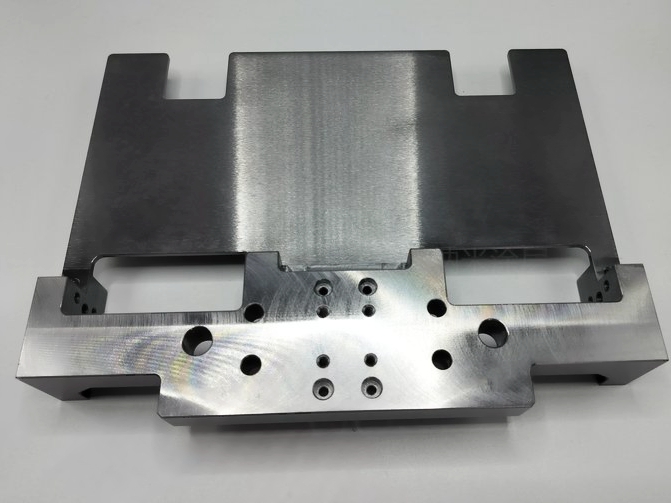Hard Coating: The Secret to Long-Lasting Die Casting Tools and Molds
Introduction
Die casting tools and molds operate under extreme thermal and mechanical stress, often exceeding 700°C in aluminum alloys or facing chemical attack from zinc or copper-based materials. Prolonged exposure to such conditions leads to rapid tool degradation, micro-cracking, soldering, and costly downtime. Hard coating technologies provide a critical solution, forming a high-hardness barrier layer that enhances resistance to wear, corrosion, and thermal fatigue. These coatings are commonly applied to die steels like H13, D2, and Tool Steel S7 to drastically improve performance and extend tooling life in mass production environments.
What Are Hard Coatings?
Hard coatings are ultra-thin, high-performance surface treatments applied via vacuum-based methods such as PVD (Physical Vapor Deposition) or CVD (Chemical Vapor Deposition). They consist of metal nitrides, carbides, or carbonitrides with hardness values typically in the 2000–4000 HV range.
Common Hard Coatings for Die Tools
Coating Type | Hardness (HV) | Max Operating Temp (°C) | Typical Application |
|---|---|---|---|
TiN (Titanium Nitride) | ~2200 | 600 | General die wear resistance |
CrN (Chromium Nitride) | ~1800 | 700 | Anti-soldering for aluminum casting |
AlTiN (Aluminum Titanium Nitride) | ~3200 | 900–1100 | High-temp aluminum and copper alloy dies |
TiCN (Titanium Carbonitride) | ~3000 | 400–500 | Abrasion-resistant inserts and ejectors |
DLC (Diamond-Like Carbon) | ~4000 | ≤300 | Ultra-smooth, low-friction parts like sleeves and pins |
These coatings form a dense barrier on die surfaces that slows oxidation, reduces friction, and blocks diffusion between molten metal and steel substrates.
Performance Benefits of Hard Coatings
Property Enhanced | Typical Improvement | Functional Impact |
|---|---|---|
Surface Hardness | Up to 4000 HV | Dramatic increase in tool wear resistance |
Thermal Resistance | Up to 1100°C | Prevents softening and fatigue cracking |
Friction Reduction | Coefficients as low as 0.2 | Reduces soldering and sticking in aluminum dies |
Chemical Inertness | Stable against molten zinc and fluxes | Prevents chemical erosion and buildup |
Hard-coated dies maintain sharper edges, smoother finishes, and dimensional stability across extended production cycles, especially when casting high-temperature alloys like A380 aluminum or Zamak 12 zinc.
Application Methods and Surface Preparation
For optimal adhesion and coating performance, dies must be cleaned and polished to a surface roughness of Ra ≤ 0.4 µm. The process typically includes:
Ultrasonic cleaning to remove oils and oxides
Vacuum heating to outgas the surface
Optional pre-coating treatments like shot peening for improved fatigue resistance
PVD or CVD coating in inert gas environments with temperatures ranging from 400°C to 600°C
The resulting layer is usually 1–5 µm thick, thin enough to preserve tolerances but strong enough to resist micro-cracking and thermal erosion.
Real-World Applications in Die Casting
Hard coatings are especially effective in areas subject to friction, erosion, and thermal cycling:
Core Pins: Prevent galling and soldering under high-speed ejection
Cavity Inserts: Retain dimensional accuracy and surface finish for cosmetic parts
Shot Sleeves: Resist washout and erosion from high-velocity molten metal
Ejector Systems: Extend pin life and reduce buildup
For example, AlTiN-coated H13 dies used in copper alloy casting have demonstrated 2x tool life compared to uncoated tools under similar operating conditions, with fewer rework interruptions.
Integration with Tooling and Maintenance
Hard coatings are not stand-alone solutions—they must be integrated into a complete tool maintenance and surface treatment strategy. This includes:
Pre-polishing to control surface roughness and coating adhesion
Scheduled inspections for coating integrity
Re-coating cycles after 30,000–50,000 shots depending on alloy and die region
Compatibility with electroplating, polishing, and nitriding to form hybrid surface systems
At Neway, hard coating solutions are tailored based on mold geometry, base steel, casting material, and expected production volume.
FAQs
What is the difference between TiN and AlTiN coatings for die tools?
How thick are hard coatings typically applied on casting molds?
Can a coated die be re-polished or repaired after surface wear?
What casting alloys benefit most from hard-coated tools?
Are hard coatings suitable for zinc and copper die casting operations?

